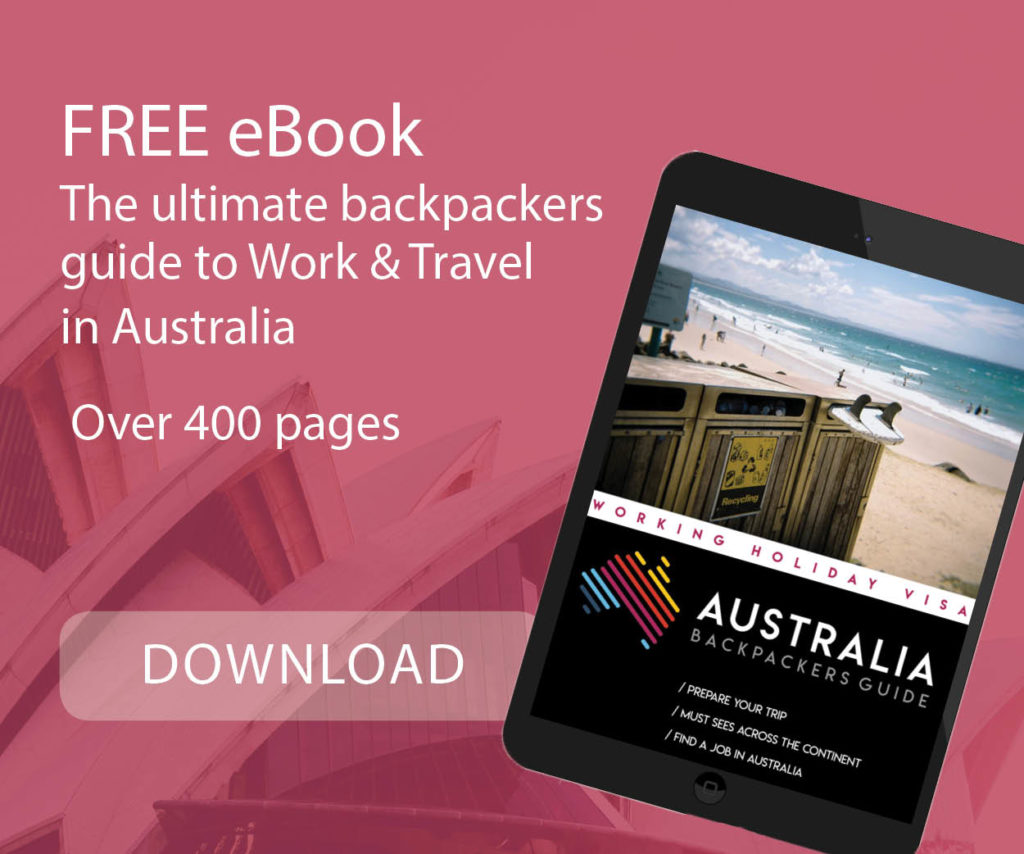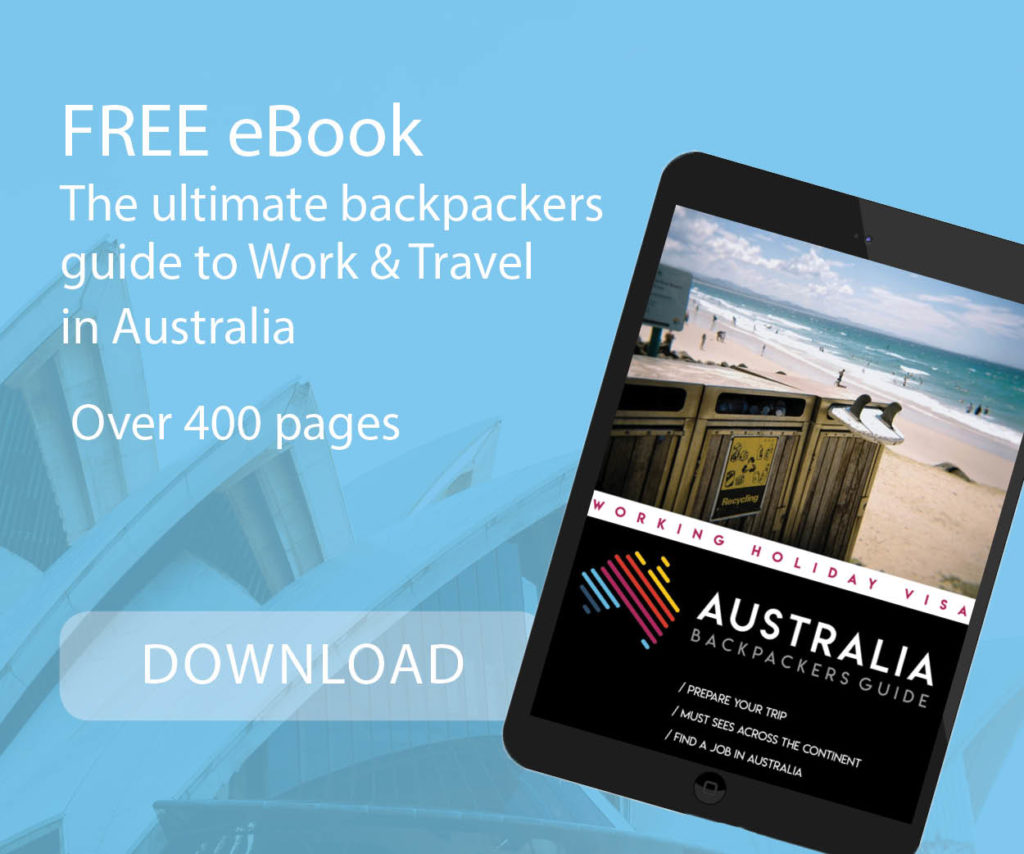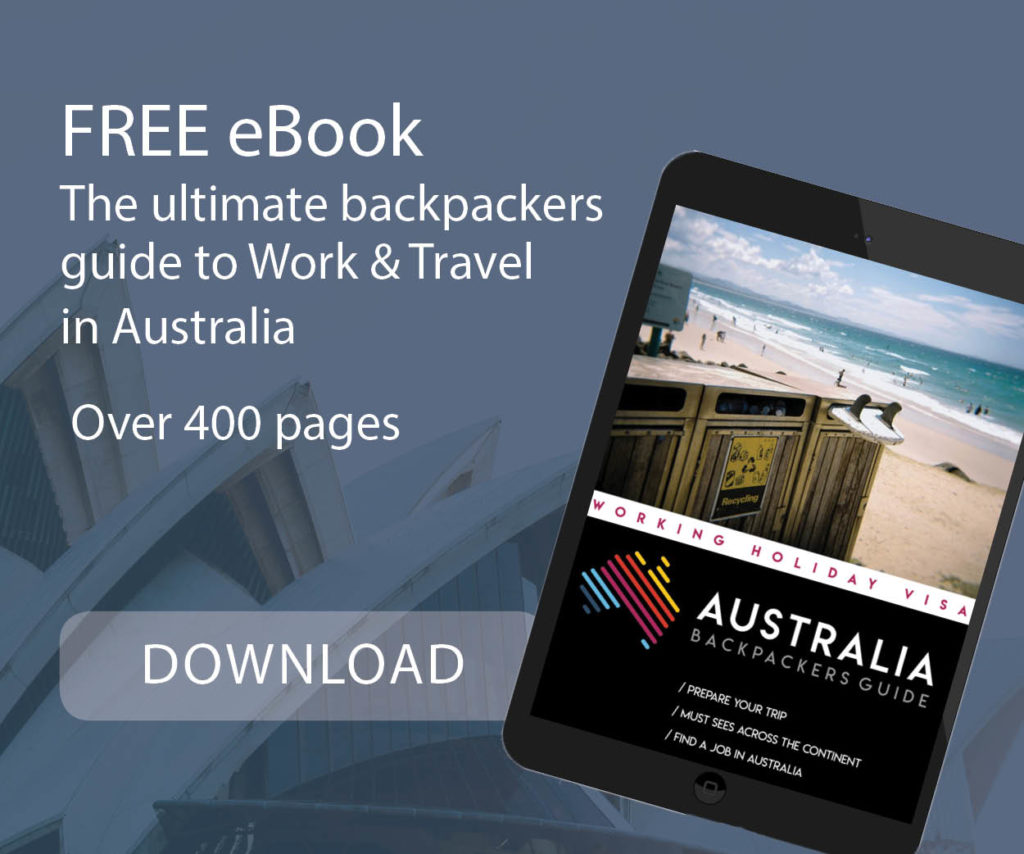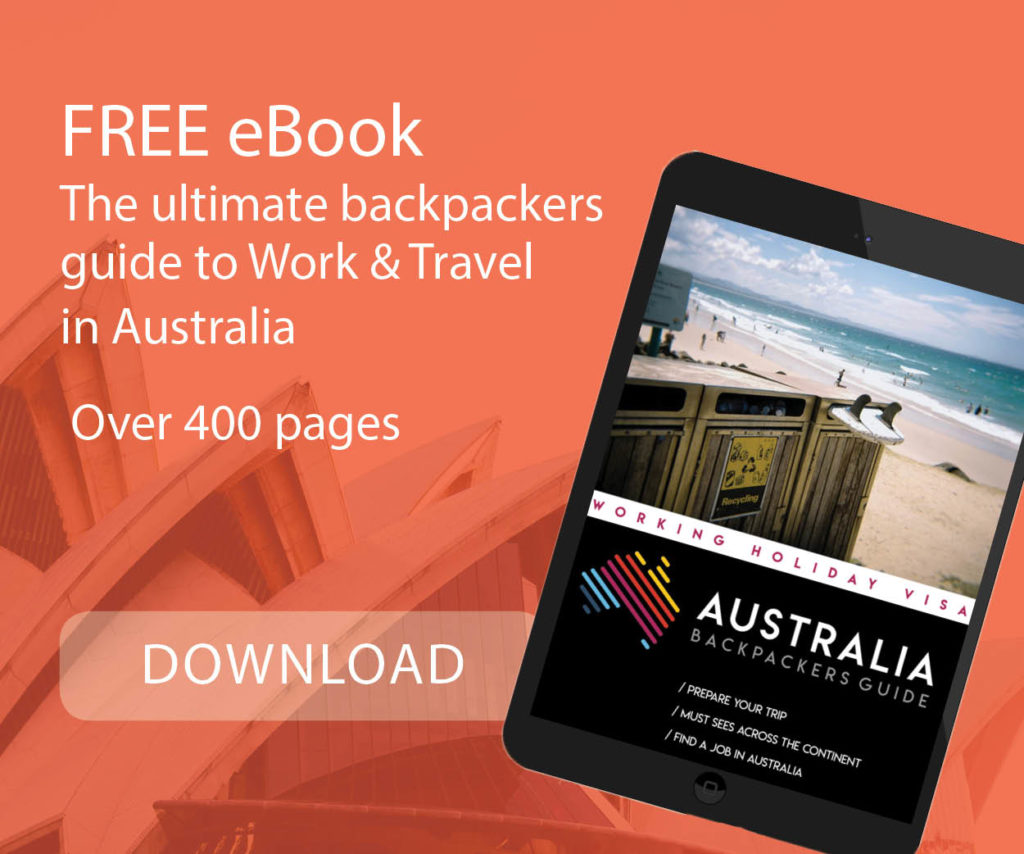When working in Australia you must pay tax to the Australian Taxation Office (ATO). The tax is taken directly from your paycheck each pay. The Australian tax system is sometimes difficult to understand and filing your tax declaration raises some questions especially with the recent changes in law.
In order to be clear as possible and find any special tips, we contacted a tax agent who provided us with accurate information on taxes when working in Australia.
Table of Contents
Tax system overview in Australia
Requirements to work in Australia
In order to work in Australia, you need to have a Tax File Number (TFN). This number is your identification with the ATO. As soon as you arrive in Australia, you should apply for your TFN. You must provide this number to your employer when you start a new job, whatever it may be (farm, catering, retail, IT, etc.). And, of course, you need a visa that allows you to work in Australia legally (WHV, student, partner, TSS, etc).
Who has to file a tax return?
Anyone who has worked in Australia and received income during the tax year (1 July to 30 June of the following year) must generally submit a tax return. This includes residents, non-residents for tax purposes and people on temporary visas who have worked in Australia. So anyone living and working in Australia is obliged to declare their income.
How does it work?
In Australia, taxes are collected by the Australian Taxation Office (ATO) directly from paychecks. Everyone working in Australia, regardless of visa type or hours worked, must declare their income.
The tax is collected directly from each salary you receive. It appears on your paychecks, usually under the title of “PAYG Withholding“.
A tax return is a form you complete online, on paper or get a tax agent to help you with, that tells the Australian Taxation Office:
- how much money you earn during the financial year
- if you are claiming any deductions.
The Australian financial year runs from 1st July to 30th June each year.
Income you must declare
Here are some of the most income you must declare in your tax return:
- Employment income: Income from working such as wages, allowances, lump sum payments, cash and tips, reportable fringe benefits and super.
- Foreign and worldwide income: Check if you need to declare foreign income and pay tax, the tax you pay depends on your residency for tax purposes.
- Government payments and allowances: if you received any payments / allowance that is not tax-free
- Investment income (interest, dividends, rental income or other capital gains).
- Compensation and insurance payments: you may need to declare and pay tax on compensation and insurance payments, including settlements.
Do you need to lodge a tax return?
You must lodge a tax return if any of the following apply to you. You:
- had tax withheld from any payments (such as wages) made to you during the income year
- are a foreign resident and you earned more than $1 in Australia during the income year
- You are leaving Australia forever or for more than one income year
- wish to claim any tax deductions.
You don’t need to lodge a tax return or a non-lodgment advice if both of the following apply:
- All of your income was earned as salary or wages while you were a Working Holiday Maker.
- The total of your taxable income for the income year was less than $45,001 for 2020–21 and later income years.
The financial year in Australia runs from July 1 to June 30, and tax returns can be lodged from July 1 to October 31 for the previous financial year. If 31 October falls on a weekend, the deadline for filing the tax return is the working day following 31 October.

Tax rates for Holiday Visa Makers (2024/2025)
Working holiday visa makers (subclasses 417 & 462) are under a specific tax system. They are taxed on a progressive tax scale without the benefit of a tax-free threshold (for most of them – see below).
For tax purposes in Australia, individuals will be either:
- an Australian resident or,
- a foreign resident.
Resident and Non-Resident Tax Rates: Tax rates vary based on residency status. Residents have a tax-free threshold and different rates apply above this threshold. Non-residents are taxed at a flat rate from the first dollar earned.
Normal rate for WHV Makers
For most backpackers, whether you are an Australian or a foreign resident for tax purposes does not affect the rate of tax you pay. Indeed, working holiday visas makers are taxed at 15% up to the first $45 000 earned.
Important ⚠️
Companies must register as employers of working holiday makers by completing a specific form. Make sure that your employer is registering you as a working holiday visa maker otherwise you will be taxed 30% (foreign resident rate).
The following rates apply to working holiday maker income regardless of residency for tax purposes (Rates 2024-2025)
| Taxable income | Tax on this income |
|---|---|
| 0 – $45,000 | 15% |
| $45,001 – $135,000 | $6,750 plus 30 cents for each $1 over $45,000 |
| $135,001 – $190,000 | $33,750 plus 37 cents for each $1 over $135,000 |
| $190,001 and over | $54,100 plus 45 cents for each $1 over $190,000 |
The only exception to this is if you are both:
- an Australian resident for tax purposes
- from a non-discrimination article (NDA) country.
Specific rate for WHM from NDA country
In 2021, in Addy v Commissioner of Taxation [2021] HCA 34, the High Court has found that the ‘backpacker tax’ is not in accordance with Australia’s treaty obligations with the United Kingdom, violating the non-discrimination article (Article 25(1) of the UK DTA)
Following this High Court decision, some working holiday makers from countries like the UK, Germany, Israel, etc., may be taxed as Australian residents.
To be eligible, you must be:
- considered an Australian resident for tax purposes and
- from an NDA country (Chile, Finland, Japan, Norway, Turkey, the UK, Germany or Israel).
For those concerned, it means that when you lodge an income tax return you may be taxed on the same basis as a resident Australian national and benefit from the threshold.
Tax rates for residents and non-residents
The tax rates in Australia are variable and depend on the status of the taxpayer. Residents are taxed at 16% while non-residents are taxed at 30%. Those rates apply to people with a student visa, sponsorship, permanent residency, etc.
Tax Rate – Residents 2024-2025
| Taxable income | Tax on this income |
|---|---|
| $0 – $18,200 | Nil |
| $18,201 – $45,000 | 16c for each $1 over $18,200 |
| $45,001 – $135,000 | $4,288 plus 30 cents for each $1 over $45,000 |
| $135,001 – $190,000 | $31,288 plus 37 cents for each $1 over $135,000 |
| $190,001 and over | $51,638 plus 45 cents for each $1 over $190,000 |
You are considered a resident of fiscal point of view after living 6 months in the same place in Australia (not necessarily at the same address, but in the same geographical area or in the same city, Sydney and the surrounding area for example) provided that you are able to prove it. To declare you as a resident from a taxes point of view, residents are taxed less than non-residents, the first level of taxation for residents is at $18,200. This means that if you earn less than the $18,200 threshold and have been in the same place for 6 months, you will get all of your tax refunded.
Tax Rate – Foreign Residents 2024-2025
| Taxable income | Tax on this income |
|---|---|
| 0 – $135,000 | 30 cents for each $1 |
| $135,001 – $190,000 | $40,500 plus 37 cents for each $1 over $135,000 |
| $190,001 and over | $60,850 plus 45 cents for each $1 over $190,000 |
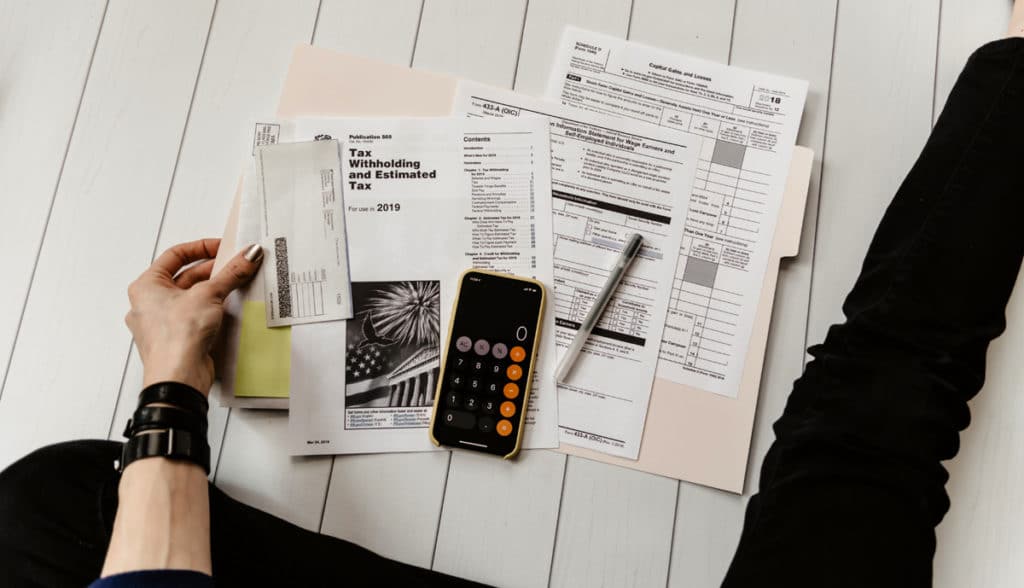
The principle of Tax return or Tax back
It is possible to recover some of the taxes you have paid to the state in some cases. But it is not systematic! Tax is calculated annually, so there might be adjustments at the end of the financial year, leading to potential tax refunds or additional tax payments.
Remember that the principle of Tax return/tax back works both ways. You may as well get your money back if your status allows, or duty to the State if the government considers you paid less tax than you need to.
As a result of the Addy decision, if you visited Australia on a working holiday visa (417,462) between 2017 and 2020, it’s likely that you will be entitled to a significant tax refund.
Resident or Non-resident
If you change the status in the course of the tax year, you will not be taxed in the right proportions. The “resident” or “non-resident” status is the most important criteria impacting the tax return / tax debt (owing money to the ATO):
SCENARIO 1: You are “non-resident” on your employment contract, and “resident” on your tax return: you have paid too much tax. If you earned less than $18,200, you get back 100%.
SCENARIO 2: You are “resident” on your contract, and “non-resident” on your tax return: you have not paid enough taxes. You have to repay the difference (the notice is usually quite salty!).
SCENARIO 3: You are “non-resident” on your employment contract and “non-resident” on your tax return: you have paid your taxes in the right proportion. The state owes you nothing and you owe no ATO either.
SCENARIO 4: You are “resident” on your employment contract and “resident” on your tax return: generally, your employers will tax you more than they should. You will get some of your taxes (or even all of your taxes) if you earned less than $ 18,200 over the year.
Note: Please note that these examples are theoretical. The government does, in fact, make random checks and sometimes there are (good or bad) surprises.
Other things to consider
Most working holiday makers are foreign resident taxpayers. As a foreign resident, you do not pay the Medicare levy – in your Australian tax return, you can claim an exemption from paying the Medicare levy for the number of days in the income year you are a foreign resident.
The calculation of your taxes is annualised, therefore you pay your taxes each pay. It is, therefore, appropriate to make an adjustment at the end of each fiscal year. If you have not worked a full year, for example, you should get some of your taxes back.
Tip 💡
If you have made purchases related to your work such as equipment (safety shoes, clothing …) or you paid transport costs to get to a place of work to another, you can deduct those costs from your taxes. Also you can claim the costs of certificate and training done in Australia for work purposes. It is important to keep the documents that prove the costs (receipts, invoice).
How to lodge your tax return in Australia?
You have to lodge your statement between 1st of July until 31 October every year. Beyond this period, penalties may be applied (unless you go through a tax agent).
If your visa expires before the end of the fiscal year, or you plan to leave the country before June 30, you can make an early statement. To do this, follow the steps explained on the ATO website concerning lodging your tax return early.
To make your statement, you have two possibilities: do it yourself or hire a tax agent.
The tax preparation procedure in a nutshell
- Gather the necessary documents: gather all the relevant documents, such as your pay slips, receipts for allowable tax deductions, bank account numbers, and any other investment income. More on this below.
- Choose the method of declaration: You can make your declaration online via myTax, accessible via the myGov portal, or by using an accountant or registered tax agent. myTax is generally the quickest and easiest way to declare.
- Completing and submitting the return: Follow the instructions for completing your return. This includes declaring all your income, claiming allowable deductions, and verifying your personal information.
- Wait for the assessment notice: Once your return has been submitted, the ATO will process it and send you an assessment notice showing your tax refund or debt.
Documents you need to lodge your tax declaration
The documents needed to make your tax return are:
- Your TFN (Tax File Number).
- The final payslips of PAYGs OR (also called Group Certificate or Statement of Earnings). These two documents provided by your employer, show your wages and taxes levied on these salaries. It is essential to be in possession of your PAYGs provided by each employer.
- Employers details: full name, postal address, telephone number, ABN.
- All your payslips for the work done.
- Documents (receipts, bills…) to prove Work-related expenses (training, clothing, tools …).
Lodge your tax return online
1. If it is your first declaration : Create a MyGov account on the ATO website and download the myTax software according to your status. Install it on your computer.
2. Open the software and complete your tax returns. A step by step guide is available to help you through the process.
Hiring a tax agent
If you do not feel comfortable doing it yourself, do not panic. You can hire a tax agent who will go through the process for you. If you have any doubts, your status is not entirely clear or in-between, or that you have large sums to potentially recover, it may be a good way to not take risks.
Caution: If you want to get some of your taxes paid to the state, it is important to follow the steps listed and to present all the necessary documents. Provide PAYG sheets for each of your employers in your statement, make sure not to leave a job without your payslips and keep them carefully. If you choose to make your return by yourself and you make a mistake on your statement, you risk an ‘audit’. It is then very difficult to go back and refund the chances are very low.
Advice
Beware of scams: The ATO warns against scams, particularly during the tax return period. Be vigilant and make sure any communication is legitimate.
Plan ahead: Don’t leave your tax return until the last minute. Starting early gives you time to gather all the necessary documents and avoid last-minute stress.
FAQs
Yes, you can claim mileage for travel expenses, including relevant tolls. However, you need to maintain records like a logbook to substantiate these claims. If you are using public transportation to go to work you will be able to claim those expenses too, just make sure you keep proof.
Yes, there are industry-specific tax deductions available. You should consult the occupation and industry-specific deductions guide to see what you can legitimately claim based on your profession.
Yes, the costs of doing your tax return, including accountant fees, are deductible. Ongoing financial advice fees are also deductible.
Yes if you work from home as a freelance, you can claim work from home expenses, which include costs like electricity, gas, internet, phone charges, stationery, and home office furniture.
– Updated on 19 June 2024 –





